Announcing EARTH FOODS 25, a list of Japanese foods being shared worldwide to improve the future of food.
No.2
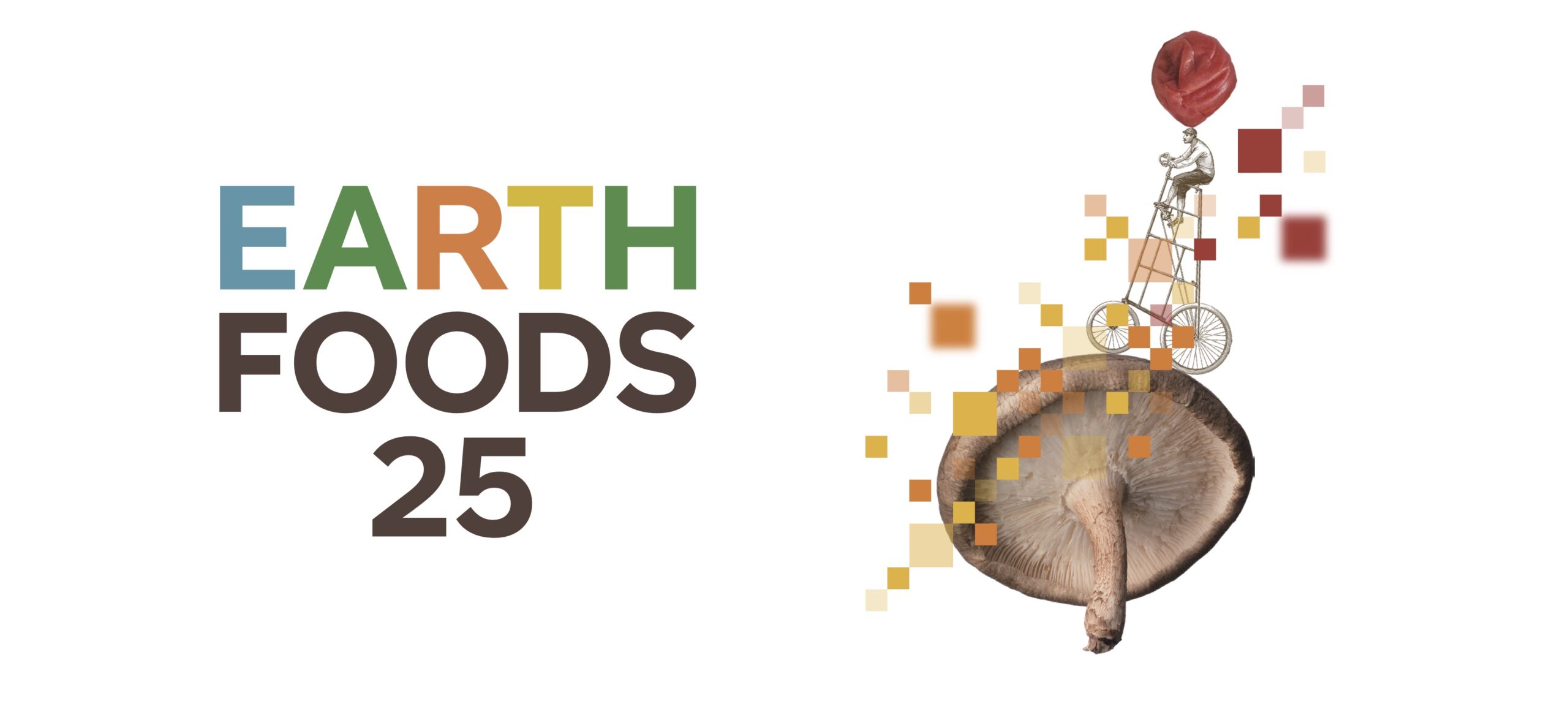
EARTH MART, a Signature Pavilion (Theme Producer: Kundo Koyama) of the World Expo 2025 in Osaka, Japan, is pleased to announce EARTH FOODS 25, a list of 25 ingredients/foods, and food-related knowledge and technologies from Japan to improve the future of food worldwide, selected by EARTH MART and food industry experts.
EARTH FOODS 25 is a list of 25 selected ingredients, foods, and food-related knowledge and technology developed in Japan. Its purpose is to share Japanese foods and convey ideas to improve the future of food worldwide.
Japan’s food culture is the accumulation of practices to co-exist in harmony with the Earth, food-related knowledge, and technology. As a leading maritime nation (Japan ranks 6th in countries with the longest coastline), Japan has a long history of sea vegetable and fermentation culture and abundant knowledge and technology in these areas. The Japanese people also have a view of nature related to food that connects vegetables, fermentation, and health. EARTH FOODS 25 aims to contribute to the advancement of food culture and solutions to environmental problems by redefining the value and essence of food in Japan and sharing this with the world.
- EARTH FOODS 25
1. Rice flour
2. Mochi (Japanese rice cake)
3. Soy milk
4. Koya-dofu (freeze-dried tofu)
5. Anko (red bean paste)
6. Daikon radish
7. Wasabi
8. Sansho pepper
9. Kanpyo (dried calabash shavings)
10. Konjac
11. Matcha
12. Japanese sour citrus (yuzu, daidai, kabosu, sudachi)
13. Umeboshi (Japanese sour salted plums)
14. Shiitake and dried shiitake mushrooms
15. Kombu
16. Wakame
17. Nori
18. Agar
19. Fugu (pufferfish)
20. Surimi (fish paste)
21. Katsuobushi (dried bonito)
22. Koji mold and tane-koji
23. Sake and hon-mirin
24. Shoyu (soy sauce) and miso
25. Pickled vegetables
- The 10 EARTH FOODS selection criteria:
Nutritious: Contains high amounts of nutrients needed for health
Environmental: Has a positive impact on the global environment
Sustainable: Can be supplied stably and make effective use of untapped ingredients
Diverse: Anyone can eat it and it can be used in a wide range of dishes
Ethical: Is human- and animal-friendly, both mentally and physically (e.g. animal welfare, fair trade)
Economical: Is relatively easily available and inexpensive
Palatable: Tastes great and makes dishes delicious
Cultural: Rooted in Japanese history, tradition, and food culture
Versatile: Can be eaten in many ways and it is easy to use and arrange
Emotional: Enriches the heart and mind
- Earth Foods Review Committee

The Earth Foods Review Committee consists of experts that play an active role in the forefront of the food industry. Serving as an advisory board, the committee deliberated before selecting the foods.
Earth Foods Review Committee Members
Takeo Koizumi (Agronomist / Professor emeritus, Tokyo University of Agriculture)
Yoshihiro Murata (Master Chef of The Restaurant “Kikunoi”)
Takeshi Kadokami (Food Columnist / Editorial advisor of "Amakara Techo")
Yoshiki Tsuji (President at Tsuji Culinary Institute)
Hitoshi Hokamura (Founder of Food Tech Studio -Bites! / Former Director of Marketing at Apple)
Yuri Nomura (Chef, Food Director for “eatrip”)
Shin-ichi Ishikawa (Professor / School of Food, Agriculture and Environmental Sciences, Miyagi University)
Yoko Ohya (Principal researcher, Food and Life Lab)
Kundo Koyama (Thematic Project Producer / Expo 2025 Osaka, Kansai, Japan, Signature Pavilion “EARTH MART”)
- EARTH FOODS 25 / The Review Committee’s rationale for selection and their thoughts on each EARTH FOODS 25 entry:
1. Rice flour [agricultural product, rice, processed food]
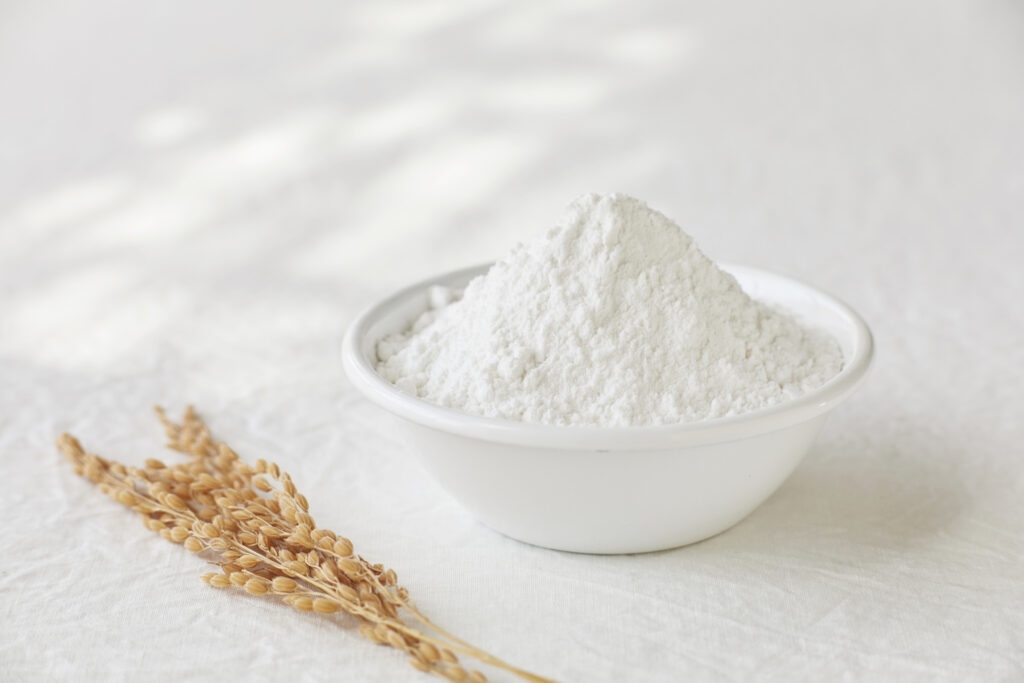
Rice, a staple in Japanese cuisine, is rich in carbohydrates that provide energy. Made by grinding rice into fine powder, rice flour has gained attention as a gluten-free alternative to wheat flour and new ways of using and eating it have emerged. Japan’s rice-growing culture is an example of living in harmony with nature.
2. Mochi (Japanese rice cake) [agricultural product, rice, processed food]
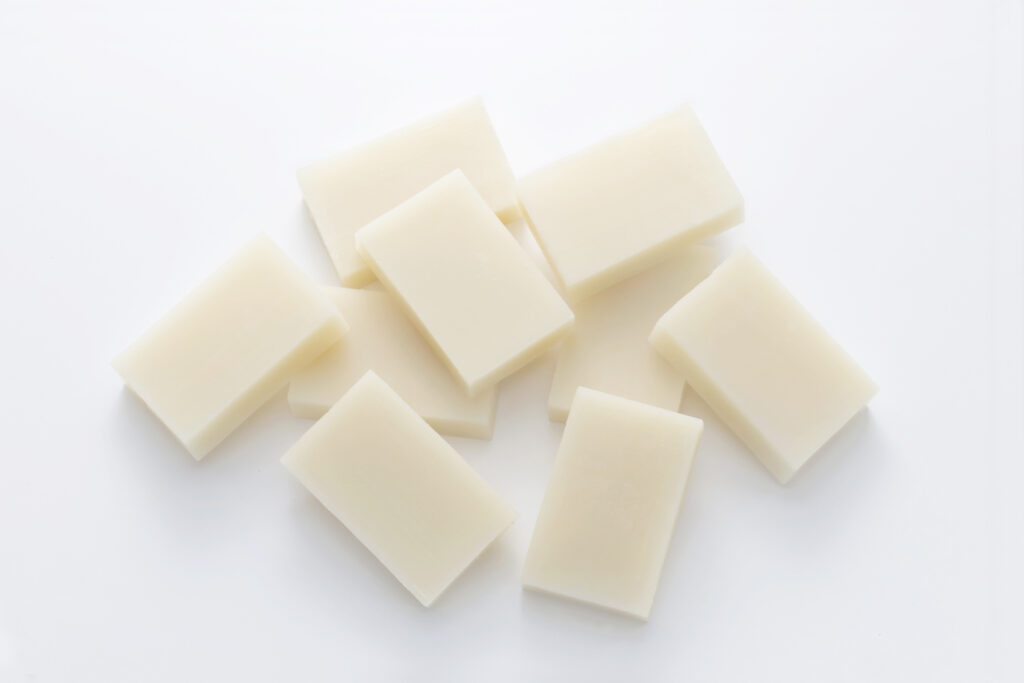
Mochi was once a venerated special food said to house the spirit of a Shinto deity. Traditionally, Japanese decorate the tokonoma (alcove) of their homes with mochi for the New Year’s season. Mochi can be eaten as a savory or sweet dish, and dried mochi is a popular preserved food in Japan. Mochi flour has spread around the world, first becoming popular as an ingredient in mochi ice cream in Japan and then expanding to a wide range of dishes beyond sweets in other countries, especially the US.
3. Soy milk [agricultural product, beans, processed food]

A plant-based milk made from soybeans, soy milk has gained the spotlight as an environmentally-friendly milk alternative. By heating it or adding bittern, soy milk can be turned into traditional foods like yuba and tofu, and today it is used in a wide range of cuisines and nutritional supplements. High in protein and low in calories, soy milk is also consumed as a health drink since it helps lower cholesterol.
4. Koya-dofu (freeze-dried tofu) [agricultural product, beans, processed food]
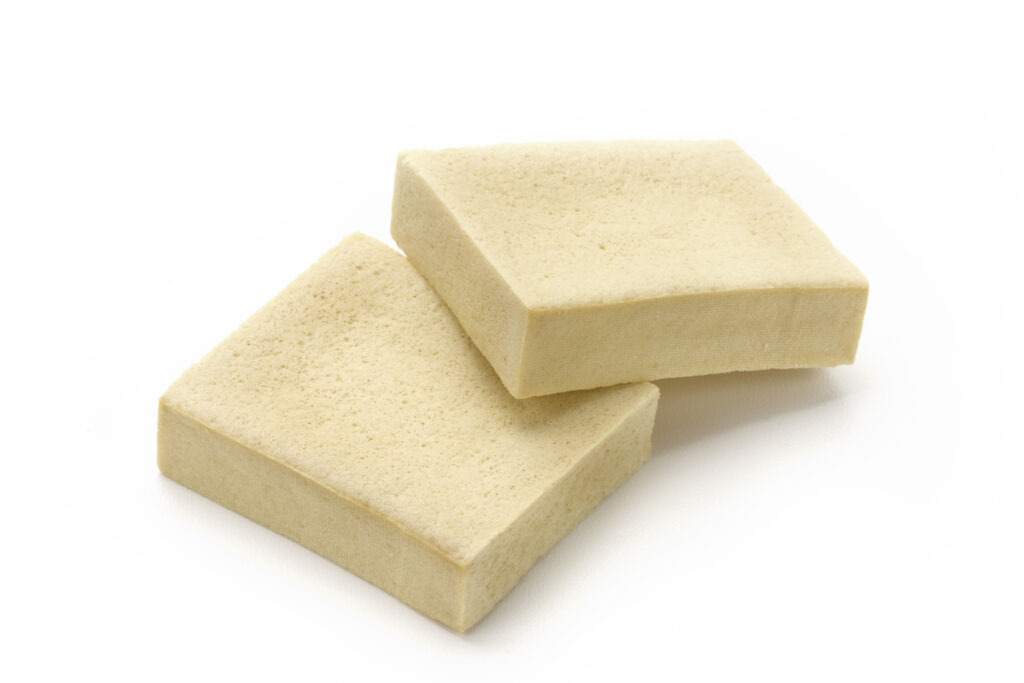
Koya-dofu, also known as kori-dofu, is a dried, preserved food made by freezing and then aging tofu at low temperature. Koya-dofu is dried, so it is light and can be preserved for a long time at room temperature using a traditional technique. Originally used in place of meat in vegetarian Buddhist cuisine, it has gained attention as a meat substitute and protein alternative. It is filling because it expands with water.
5. Anko (red bean paste) [agricultural product, beans, processed food]

Anko is a paste made from boiled adzuki beans. Its origins can be traced back to a similar Chinese dish that is made with meat. In Japan, beans replaced the meat and it became a new type of food. Adzuki beans are rich in polyphenols and other nutrients that contribute to health and beauty. Japanese confectioners color and shape anko to express Japan’s four seasons in Japanese sweets. It has the potential to be used in Western savory and sweet dishes as well.
6. Daikon radish [agricultural product, vegetable]

Literally “big root,” daikon radish is one of Japan’s main vegetables. Eaten year-round, it varies greatly from region to region. Daikon can be eaten raw, grated, boiled, broiled or steamed. Every part of the plant is edible, including the skin, leaves, and stems. Rich in glutamic acid, it also makes a great dashi broth. Daikon can also be preserved by drying (i.e., kiriboshi daikon) or by fermenting (i.e., takuwan).
7. Wasabi [agricultural product, vegetable]
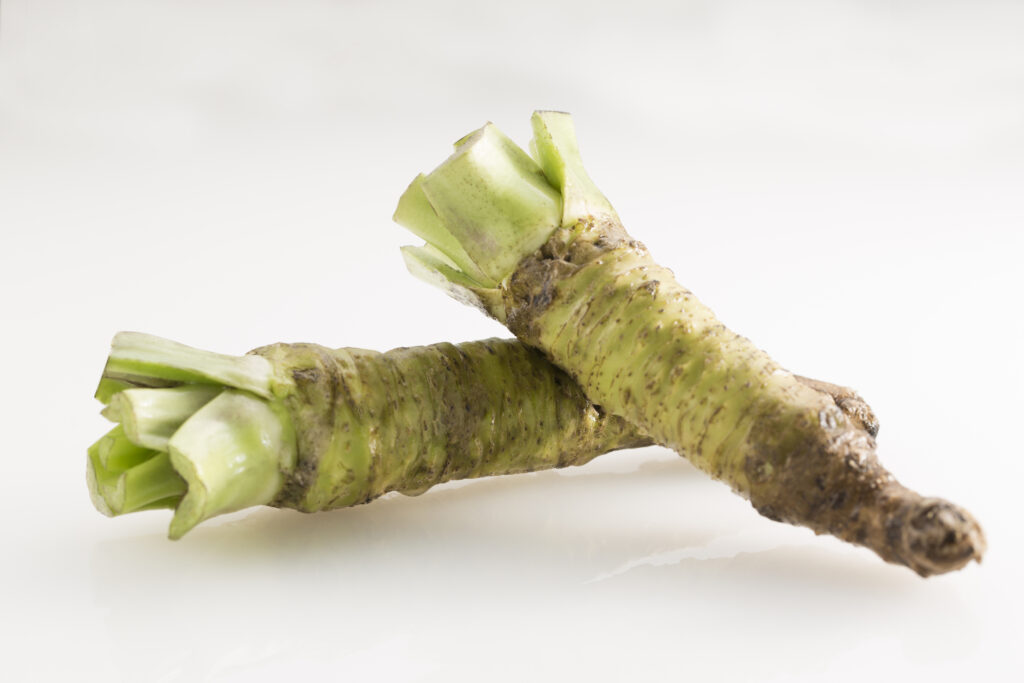
A plant unique to Japan, wasabi is cultivated in one of two ways: in water such as mountain streams, which is referred to as mizu-wasabi, and in the soil, which is referred to as hatake-wasabi. Due to properties that mask the odor of fish and meat and prevent bacterial growth, and also thanks to its unique flavor, wasabi became a popular sushi condiment in the Edo Period (1603 - 1868). Success stories of cultivating wasabi outside of Japan have increased, and a variety of new recipes that make effective use of wasabi in non-Japanese cuisine have emerged.
8. Sansho pepper [agricultural product, vegetable]
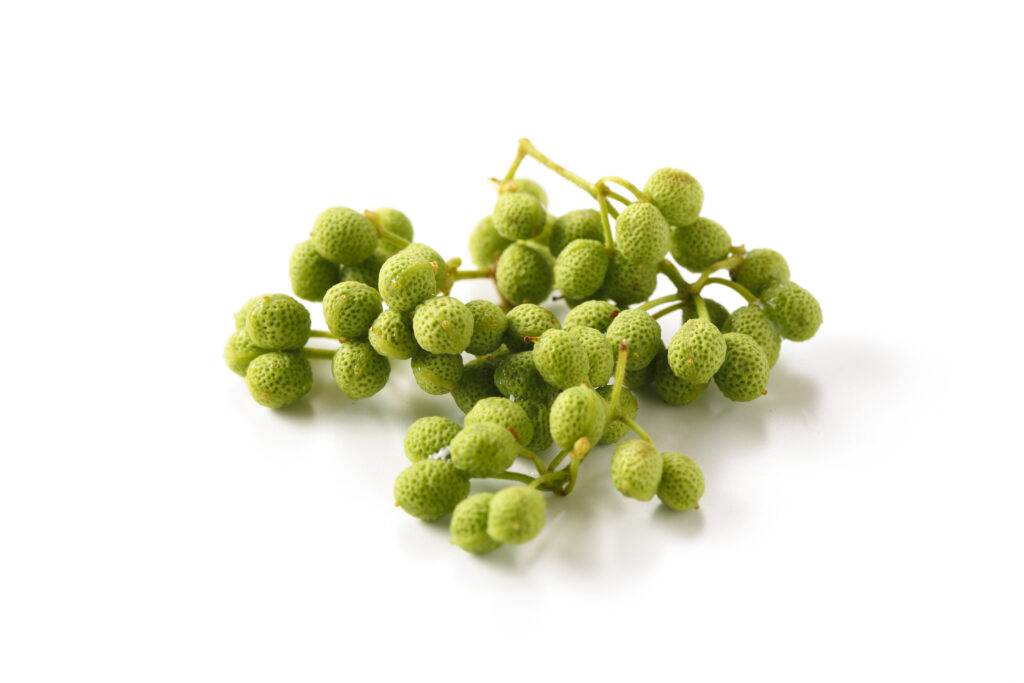
Sansho pepper comes from a plant in the citrus family. It is spicy with a distinctive aroma and creates a tingling sensation in the mouth. The young leaves that sprout in the early spring are called kinome, the fruit that appears in the early summer is called aosansho, and the ripe fruit is called misansho. Kosansho, or powdered sansho, is produced in the autumn. Recently sansho pepper has grown in popularity in Europe and the US because its aroma invokes the forests of Japan and it can be used in place of salt. Not customarily eaten outside of Japan, sansho pepper is an untapped resource with a lot of potential.
9. Kanpyo (dried calabash shavings) [agricultural product, vegetable, processed food]
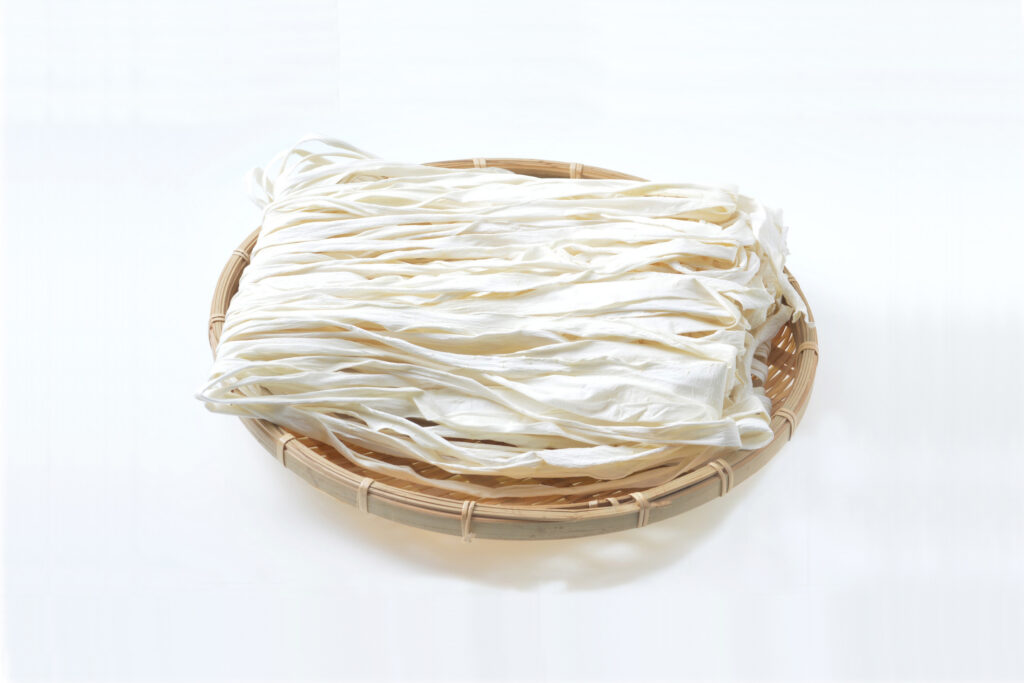
Kanpyo is long thin strips of dried calabash. Its most noteworthy nutritional component is its fiber content—it is truly a dried superfood. Kanpyo is used as an ingredient in sushi rolls, but thanks to its mild flavor, it can be used in almost any type of cuisine. Many love its unique texture. It can also be used to make dashi broth or as an ingredient in other dishes and is also easily incorporated into vegan cuisines.
10. Konjac [agricultural product, tubers and roots, processed food]
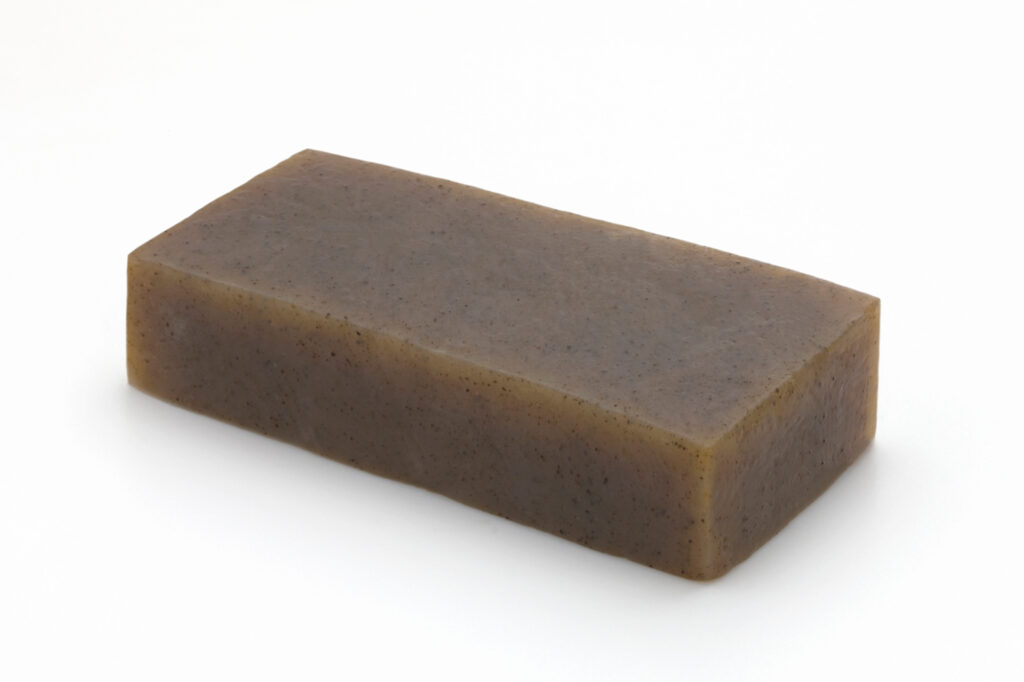
Made from the plant of the same name, konjac has a distinctive rubbery, gelatin-like texture. Konjac is 97% water, low in both calories and sugar, and high in fiber, so it has potential for other uses such as improving gastrointestinal health. Creative konjac dishes specially designed to improve beauty and health and gluten-free konjac noodles called shirataki are in the spotlight now. In addition to conventional “wet” konjac, the market for dry konjac is also growing as it preserves well and is easier to transport.
11. Matcha [agricultural product, tea, processed food]
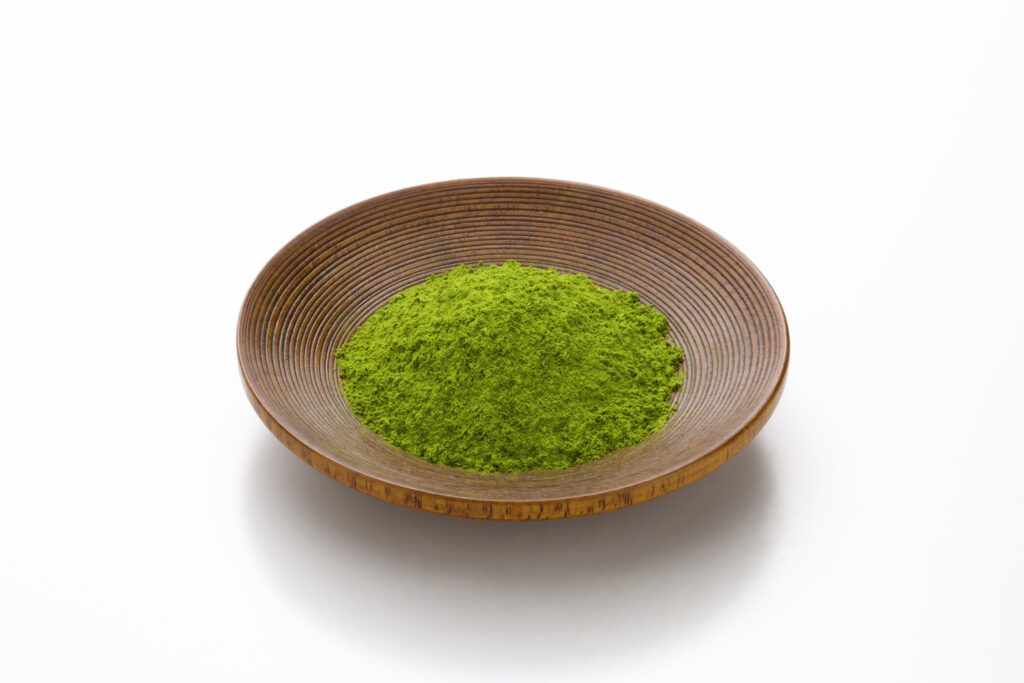
An indispensable part of the Japanese tea ceremony, matcha is recognized globally as a superfood. It is made by grinding young tea leaves into powder. To make a drink, the matcha powder is mixed in water, so it contains more nutrients than standard green tea leaf infusions. Matcha is also a healthy alterative to coffee since it has less caffeine. Today, it is used in matcha latte and matcha desserts as well as a wide variety of dishes.
12. Japanese sour citrus (yuzu, daidai, kabosu, sudachi) [agricultural product, fruit]
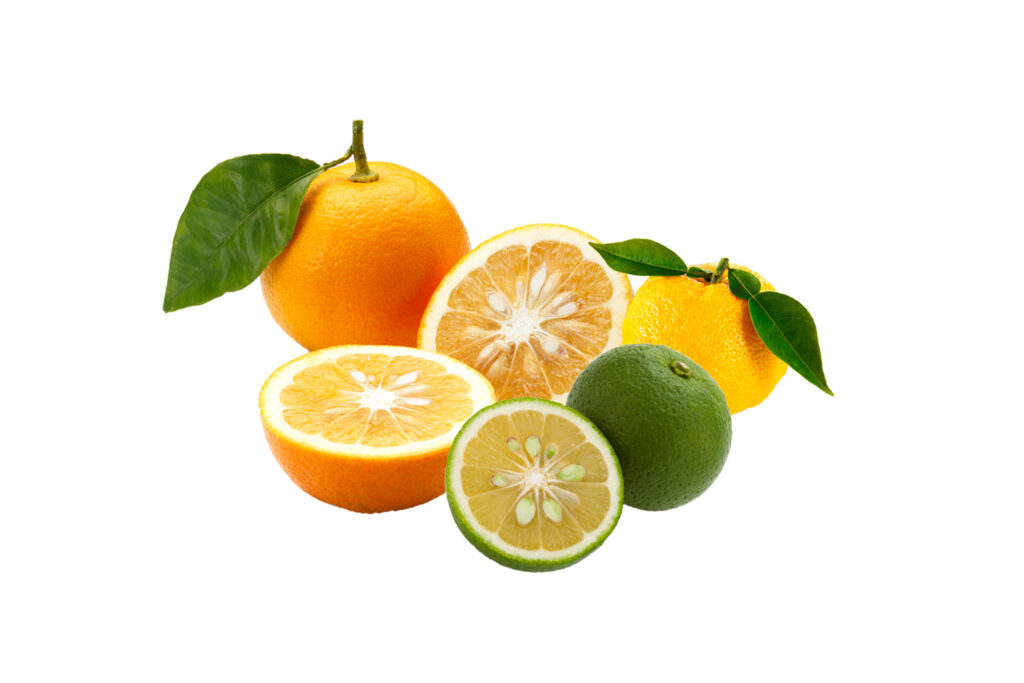
There are many varieties of sour citrus fruits in Japan, in which the fruit itself is not eaten but the juice and zest are used to accent dishes. Yuzu has taken root worldwide due to its strong, herb-like aroma. Other popular Japanese sour citruses include daidai, kabosu, and sudachi. For hundreds of years, they have been used to prevent food poisoning caused by animal protein that can easily spoil and to improve the preservability of foods.
13. Umeboshi (Japanese sour salted plums) [agricultural product, fruit, processed food]
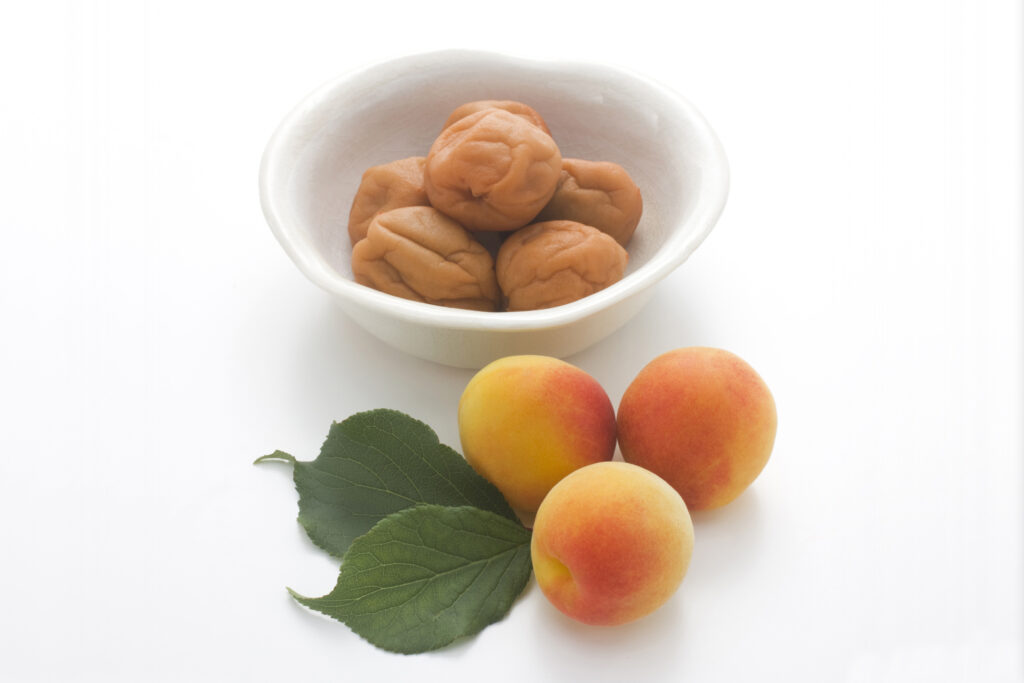
Made from only ume (Japanese plum), shiso, and salt, umeboshi is a preserved food that is an indispensable part of Japanese food culture. Long used as medicine, umeboshi is said to have a variety of health benefits such as relieving physical fatigue and improving digestion. Outside of Japan, many have avoided it due to its famously intense sourness, but recently it has received high praise as a vegan food.
14. Shiitake and dried shiitake mushrooms [agricultural product, mushroom]
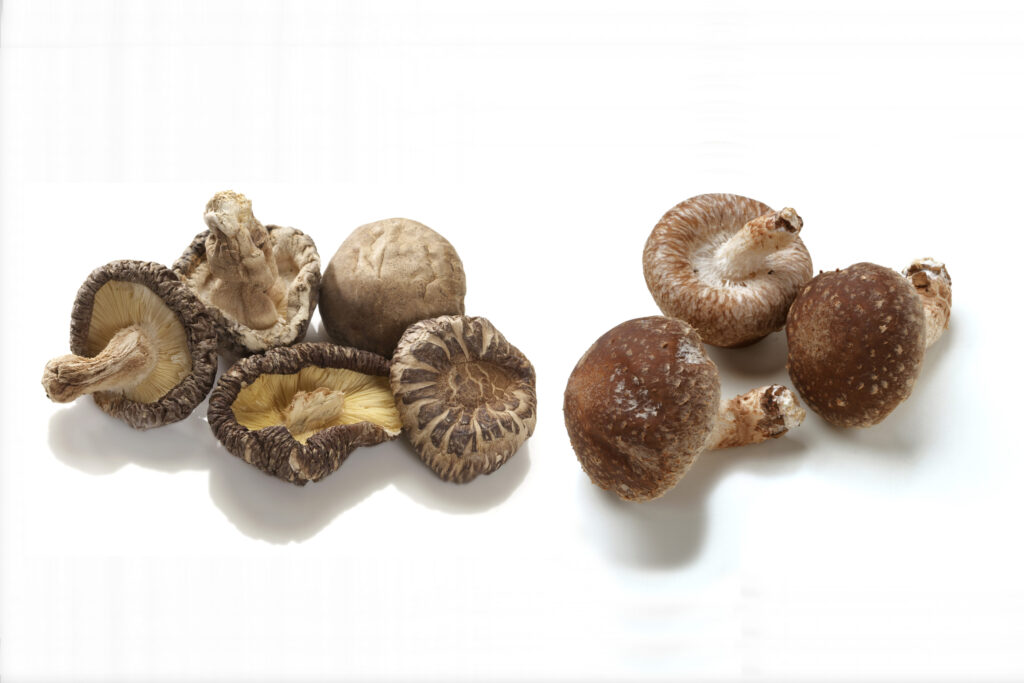
Shiitake is an edible mushroom native to China and Japan that is grown worldwide today. Used in both Japanese and Western cuisine, shiitake has a pleasantly chewy, meaty texture and can be broiled, boiled, or eaten in a variety of other ways. When dried, it can be preserved for a long time and used to add umami, or savory taste, to dishes. Dried shiitake has about twice as much fiber as fresh shiitake and about 10 times the amount of vitamin D. Dried and powdered shiitake have gained attention outside of Japan as umami boosters.
15. Kombu [marine product, sea vegetable]
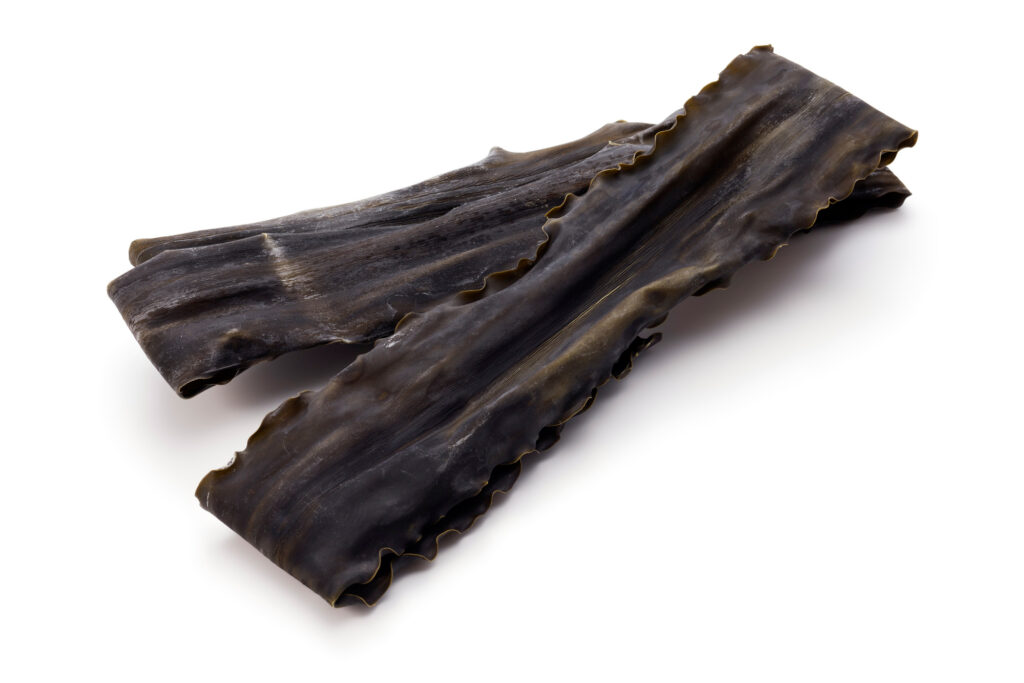
A miracle sea vegetable used to add umami to Japanese cuisine, it is said that only kombu stores glutamic acid. Hokkaido produces 90% of all kombu, but Osaka has contributed to the development of the kombu industry. It is used to make dashi broth and can be enjoyed in a wide variety of ways—by itself, added to dishes, or as a snack. The delicate, Japanese umami taste is growing in popularity globally, and the demand for kombu is growing too.
16. Wakame [marine product, sea vegetable]
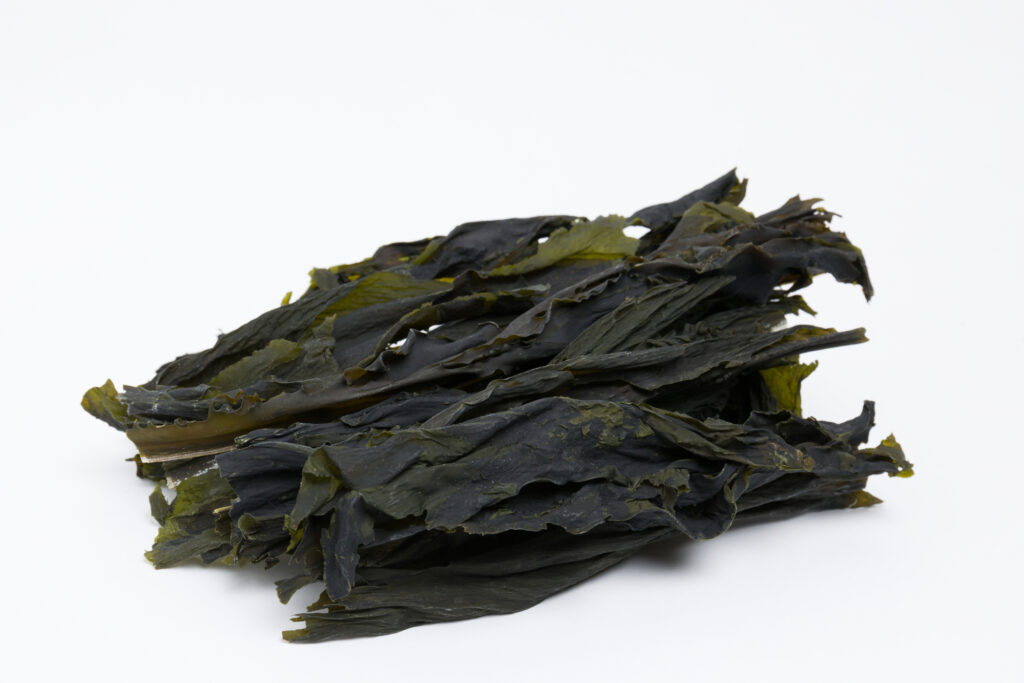
Rich in nutrients the body needs, such as fiber and marine minerals, wakame is said to be Japan’s oldest anti-aging food. It can be preserved for a long time by curing it with salt and drying it. Wakame is used in a wide range of dishes including soup and salad, as well as marinated, vinegared, simmered, and sautéed dishes. Transported by ships, wakame has spread around the globe and become an invasive species in some places. However, gradually, more people are starting to eat it.
17. Nori [marine product, sea vegetable, processed food]

Nori is a sea vegetable that is dried and pressed into thin, paper-like sheets. It has among the highest protein content of sea vegetables, which increases by about 40% when dried. In addition to using it to make onigiri and sushi, nori can also be used in Western cuisines, including soup, salad, and pasta, and the nutritional balance of a dish is improved just by adding it as a topping. Nori has gained attention in Europe and the US, where there are many vegetarians.
18. Agar [marine product, sea vegetable, processed food]
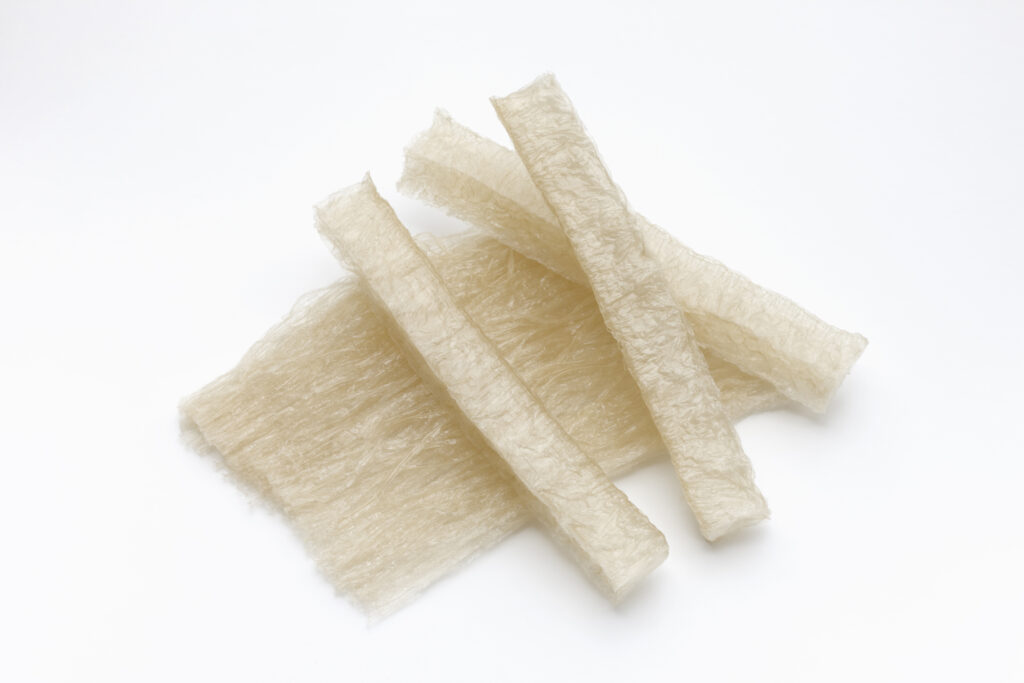
Made by freeze-drying tokoroten, which is made by boiling red algae, agar is a freeze-dried food that dates back hundreds of years. It has gained the spotlight for its health benefits; it has no calories and is high in fiber. Due to its solidifying properties, it is used in yokan and ice cream. Today, agar is also added to meat substitutes since the fiber content provides a juicy, meaty texture.
19. Fugu (pufferfish) [marine product, fish]
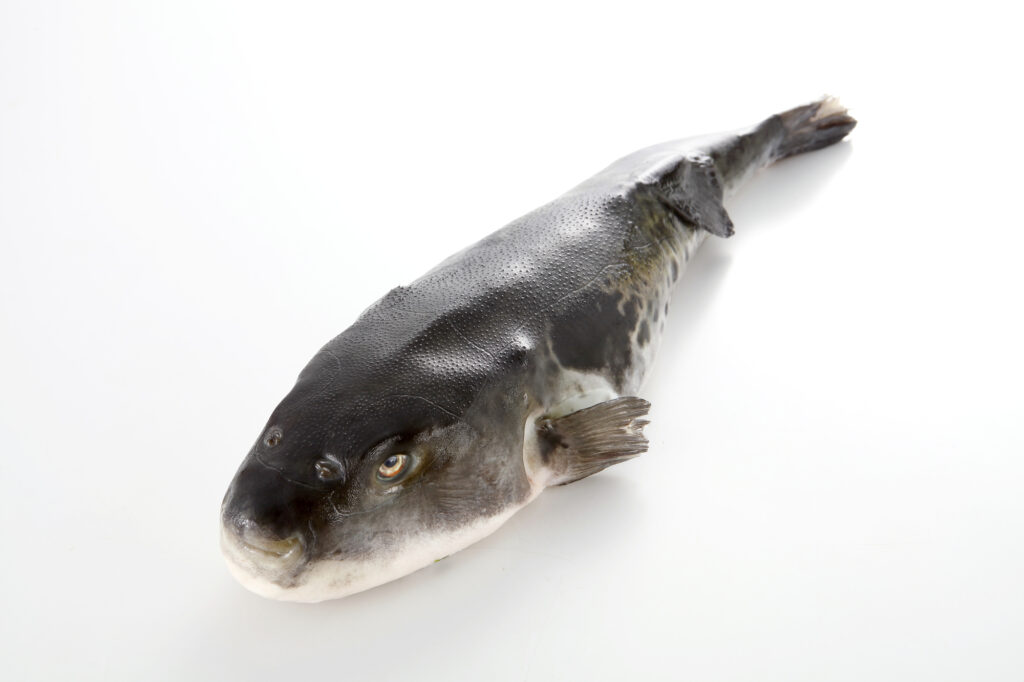
The process of turning the poisonous pufferfish into a great tasting dish, fugu preparation is the pinnacle of Japanese food culture developed centuries ago. The most prized fugu is torafugu (tiger puffer), of which Osaka consumes around 60%. Low in fat, high in protein, and easy to farm, fugu have gained attention as a possible source of protein to address food shortage in the future. Fugu are found all over the world, but are not eaten in most countries, so fugu food culture has the potential to become international.
20. Surimi (fish paste) [marine product, fish, processed food]

Surimi is fish that is ground into a paste and then processed and shaped. It can be steamed to make kamaboko, boiled to make hanpen, broiled to make chikuwa, and fried to make satsuma-age. Surimi is mainly made from walleye pollock, but it can also be made with lower-value or surplus stock fish. Imitation crab meat (kanikama) is a crab substitute that even those with crab allergies can eat, which has spread across the globe as a food that is delicious in its own right, despite the name “imitation.”
21. Katsuobushi (dried bonito) [marine product, fish, fermented food]
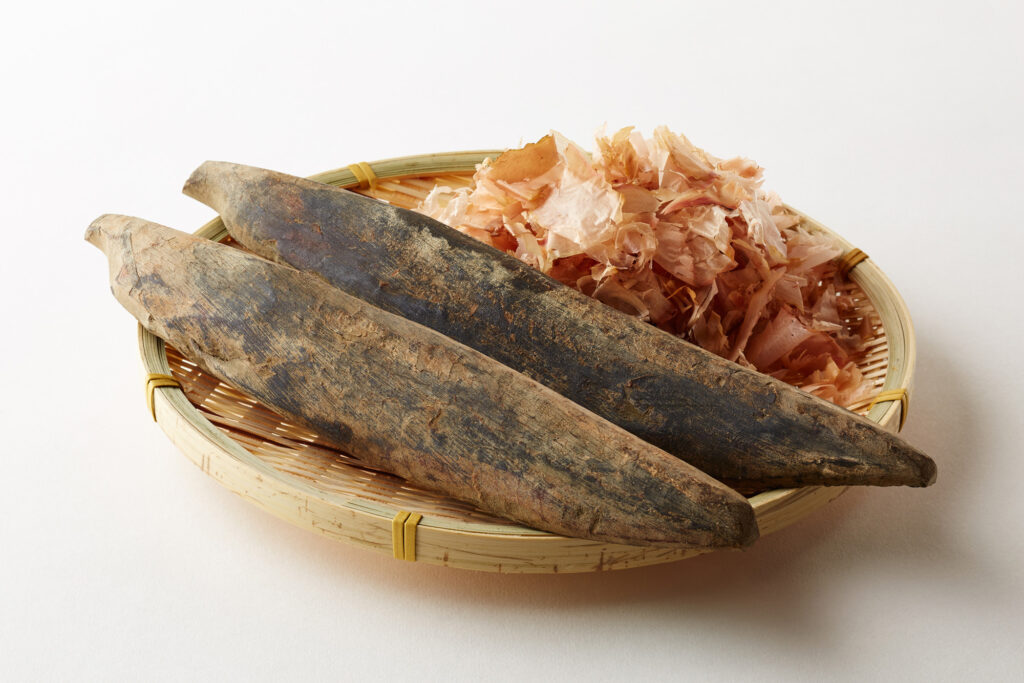
An important ingredient used to add umami to food, katsuobushi is a preserved food made with the unique method of smoking, adding mold, and aging bonito (also known as skipjack tuna). There is almost no waste in the production process and it is packed full of nutrients. When made from other fish, it is called fushirui. Meat is also processed in this way. For example, shikabushi is dried and fermented deer meat. Due to strict import regulations in other countries, recently some companies have built katsuobushi factories outside of Japan.
22. Koji mold and tane-koji [mold, fermented food]

Koji mold is a type of mold unique to Japan and only Japan uses it in the brewing fermentation process. This sophisticated biotechnology plays a key role in a wide range of fermented foods in Japan. Koji has great potential for the future. It is actively used by gastronomy restaurants in Europe and the US, and tane-koji—a koji starter made of powdered koji mold spores—could potentially be used to make koji from local ingredients abroad.
23. Sake and hon-mirin [agricultural product, rice, fermented food]

Sake is made from fermented rice, rice koji, and water. It is created using a sophisticated process called “multiple parallel fermentation” in which two chemical reactions occur simultaneously: saccharification and alcoholic fermentation. Sake is also an important form of seasoning in Japanese cuisine. Hon-mirin is a type of seasoning made by mixing mochi rice, rice koji, and shochu to form moromi, which is then saccharified and aged. It can be used as a sweetener in place of sugar.
24. Shoyu (soy sauce) and miso [agricultural product, beans, fermented food]
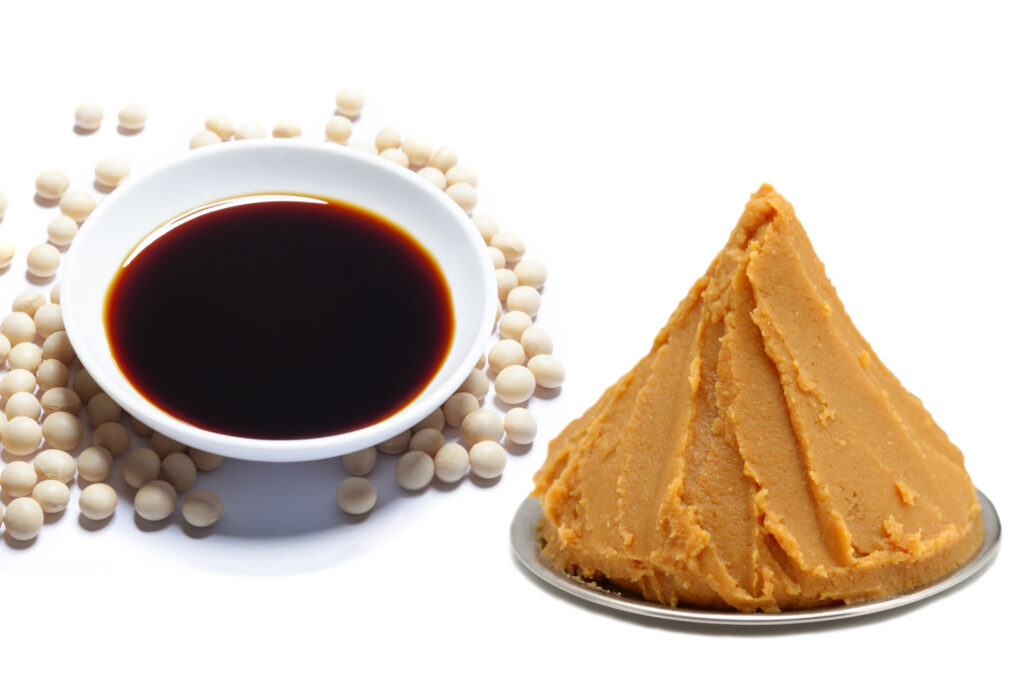
Said to have originated from jiang (a type of Chinese soybean paste used since ancient times) shoyu and miso are fermented condiments made from soybeans developed in Japan. They contain more glutamic acid, the chemical compound responsible for the umami taste, than soybeans. Shoyu comes in many variations and miso varies greatly from region to region. Recently shoyu and miso have become available in a greater variety of forms. Examples include powder, paper, and even mousse. They are used in wide range of cuisines. Use of shoyu and miso has grown outside of Japan as well.
25. Pickled vegetables [agricultural product, vegetables, fermented food]

Japan is home to a huge variety of pickled foods, called tsukemono in Japanese. Pickling vegetables with salt, shoyu, miso, vinegar, koji, rice bran, sake lees, and other ingredients give vegetables a rich flavor and increase preservability. Fermentation progresses as it is stored, which increases umami and growth of high-quality lactic acid bacteria. Pickled vegetables have been reevaluated as a symbiotic food that provides health benefits from consuming lactic acid bacteria and vegetables together. Also, eating fragrant tsukemono can serve as a palette cleanser.
*Supplement on Sea Vegetables (15-18)
Deemed to be an outstanding marine plant that absorbs CO2, sea vegetables were dubbed “blue carbon” in the United Nations Environment Programme 2009 report. Since then they have received worldwide attention. In the past, they had been known as “seaweed” in English, but more recently they have come to be referred to as “sea vegetables” and their consumption has started to grow outside of Japan. There are 1,500 types of sea vegetables in the sea area of Japan, and a wide range of ways to eat, cook, and use them in the country. By making use of sea vegetables, Japan can play a key role in building a more sustainable future.
